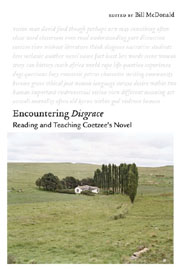18 results
Measuring Firm Complexity
-
- Journal:
- Journal of Financial and Quantitative Analysis , First View
- Published online by Cambridge University Press:
- 15 May 2023, pp. 1-28
-
- Article
-
- You have access
- Open access
- Export citation
Wild radish (Raphanus raphanistrum) interference in wheat
-
- Journal:
- Weed Science / Volume 54 / Issue 4 / August 2006
- Published online by Cambridge University Press:
- 20 January 2017, pp. 749-756
-
- Article
- Export citation
Using 10-K Text to Gauge Financial Constraints
-
- Journal:
- Journal of Financial and Quantitative Analysis / Volume 50 / Issue 4 / August 2015
- Published online by Cambridge University Press:
- 20 October 2015, pp. 623-646
- Print publication:
- August 2015
-
- Article
- Export citation
Contributors
-
-
- Book:
- The Cambridge Dictionary of Christianity
- Published online:
- 05 August 2012
- Print publication:
- 20 September 2010, pp xi-xliv
-
- Chapter
- Export citation
Contents
-
- Book:
- Encountering 'Disgrace'
- Published by:
- Boydell & Brewer
- Published online:
- 12 September 2012
- Print publication:
- 15 April 2009, pp v-vi
-
- Chapter
- Export citation
I - Reading Disgrace
-
- Book:
- Encountering 'Disgrace'
- Published by:
- Boydell & Brewer
- Published online:
- 12 September 2012
- Print publication:
- 15 April 2009, pp 13-14
-
- Chapter
- Export citation
Frontmatter
-
- Book:
- Encountering 'Disgrace'
- Published by:
- Boydell & Brewer
- Published online:
- 12 September 2012
- Print publication:
- 15 April 2009, pp i-iv
-
- Chapter
- Export citation
Index
-
- Book:
- Encountering 'Disgrace'
- Published by:
- Boydell & Brewer
- Published online:
- 12 September 2012
- Print publication:
- 15 April 2009, pp 357-363
-
- Chapter
- Export citation
II - Reading Disgrace with Others
-
- Book:
- Encountering 'Disgrace'
- Published by:
- Boydell & Brewer
- Published online:
- 12 September 2012
- Print publication:
- 15 April 2009, pp 231-232
-
- Chapter
- Export citation
3 - “Is it too late to educate the eye?”: David Lurie, Richard of St. Victor, and “vision as eros” in Disgrace
- from I - Reading Disgrace
-
-
- Book:
- Encountering 'Disgrace'
- Published by:
- Boydell & Brewer
- Published online:
- 12 September 2012
- Print publication:
- 15 April 2009, pp 64-92
-
- Chapter
- Export citation
Notes on the Contributors
-
- Book:
- Encountering 'Disgrace'
- Published by:
- Boydell & Brewer
- Published online:
- 12 September 2012
- Print publication:
- 15 April 2009, pp 353-356
-
- Chapter
- Export citation
Acknowledgments
-
- Book:
- Encountering 'Disgrace'
- Published by:
- Boydell & Brewer
- Published online:
- 12 September 2012
- Print publication:
- 15 April 2009, pp vii-viii
-
- Chapter
- Export citation
Introduction
-
-
- Book:
- Encountering 'Disgrace'
- Published by:
- Boydell & Brewer
- Published online:
- 12 September 2012
- Print publication:
- 15 April 2009, pp 1-12
-
- Chapter
- Export citation

Encountering 'Disgrace'
- Reading and Teaching Coetzee's Novel
-
- Published by:
- Boydell & Brewer
- Published online:
- 12 September 2012
- Print publication:
- 15 April 2009
Works Cited
-
- Book:
- Encountering 'Disgrace'
- Published by:
- Boydell & Brewer
- Published online:
- 12 September 2012
- Print publication:
- 15 April 2009, pp 341-352
-
- Chapter
- Export citation
Multivariate Tests of Asset Pricing: The Comparative Power of Alternative Statistics
-
- Journal:
- Journal of Financial and Quantitative Analysis / Volume 25 / Issue 2 / June 1990
- Published online by Cambridge University Press:
- 06 April 2009, pp. 163-185
- Print publication:
- June 1990
-
- Article
- Export citation
Event Studies and Systems Methods: Some Additional Evidence
-
- Journal:
- Journal of Financial and Quantitative Analysis / Volume 22 / Issue 4 / December 1987
- Published online by Cambridge University Press:
- 06 April 2009, pp. 495-504
- Print publication:
- December 1987
-
- Article
- Export citation
Functional Forms and the Capital Asset Pricing Model
-
- Journal:
- Journal of Financial and Quantitative Analysis / Volume 18 / Issue 3 / September 1983
- Published online by Cambridge University Press:
- 06 April 2009, pp. 319-329
- Print publication:
- September 1983
-
- Article
- Export citation



